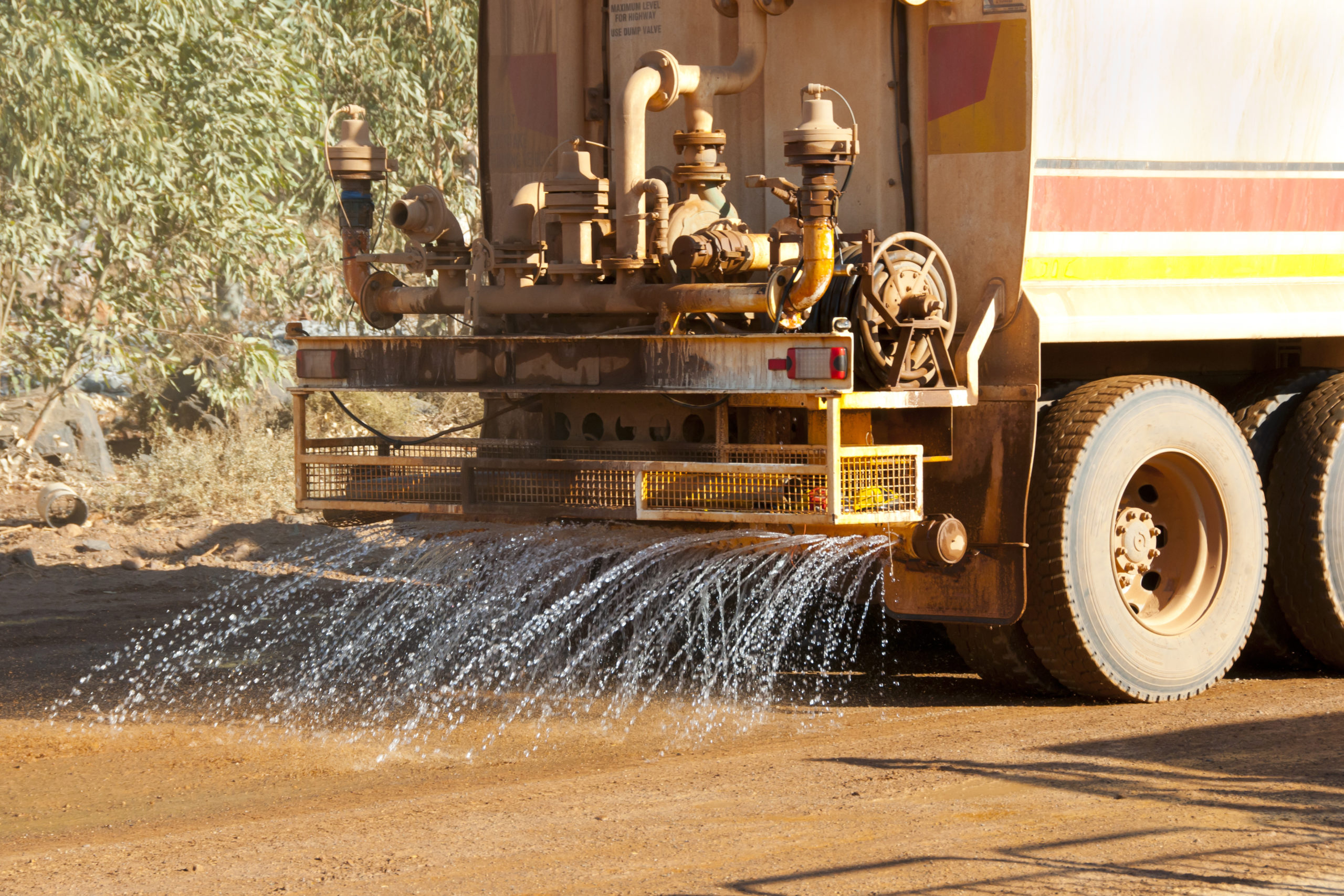

Particulate matter is the main pollution problem in mines. The mining area is constantly exposed to a lot of activities that generate a large amount of dust and suspended particles. Blasting, excavations, handling and loading of aggregate onto storage piles, and vehicle transport of the mined material, are the main sources of particles in an open pit mine. Therefore, it is essential to carry out an exhaustive control of these activities, as well as to apply certain mitigation measures that reduce, as far as possible, the amount of particulate material that these activities generate.
Continuous watering
Unpaved roads are one of the main sources of particle emission in a mine, due to the continuous truck movement transporting the mined material. When a vehicle travels an unpaved road, the force of the wheels on the road surface causes pulverization of surface material, and this situation becomes worst when the ground is not very humid and is also composed of fine material. Paving these roads would largely solve this problem, but it is not always feasible to apply this measure. There are, however, other cheaper measures such as watering of roads and tracks (either by irrigation with vats or water nebulizers) that can reduce up to 90% of this type of emissions. The addition of gravel or some chemical treatment would also help to minimize the removal of particulate material on the roads.
Natural or artificial barriers
Material storage piles are another important source of emission in a mine. These types of emissions are due to wind which produces fine particle from the piles where the mined material is stocked. A barrier located in the direction of the wind, with a height of approximately three times the height of the storage pile, would reduce PM10 emissions between 60% and 80%.
Mitigation and prevention
Reducing the height from which the material discharges are made, washing the tires of vehicles, placing covers on conveyor belts or storage points, or reducing the speed of the vehicles are other examples of the different dust reduction measures that can be applied in a mining environment. Nevertheless, it is important that these measures are applied correctly, paying special attention to the local weather. The forecast of some meteorological variables, such as wind direction or speed, can help to manage the activities within the mine, and thus optimize the mitigation measures that must be applied. Forecasting weather events will help to prevent high levels of particulate matter.
Consequently, a correct management and application of mitigation measures could help reduce pollution levels by up to 80%, hence helping to contribute to be responsible in mining activities.


